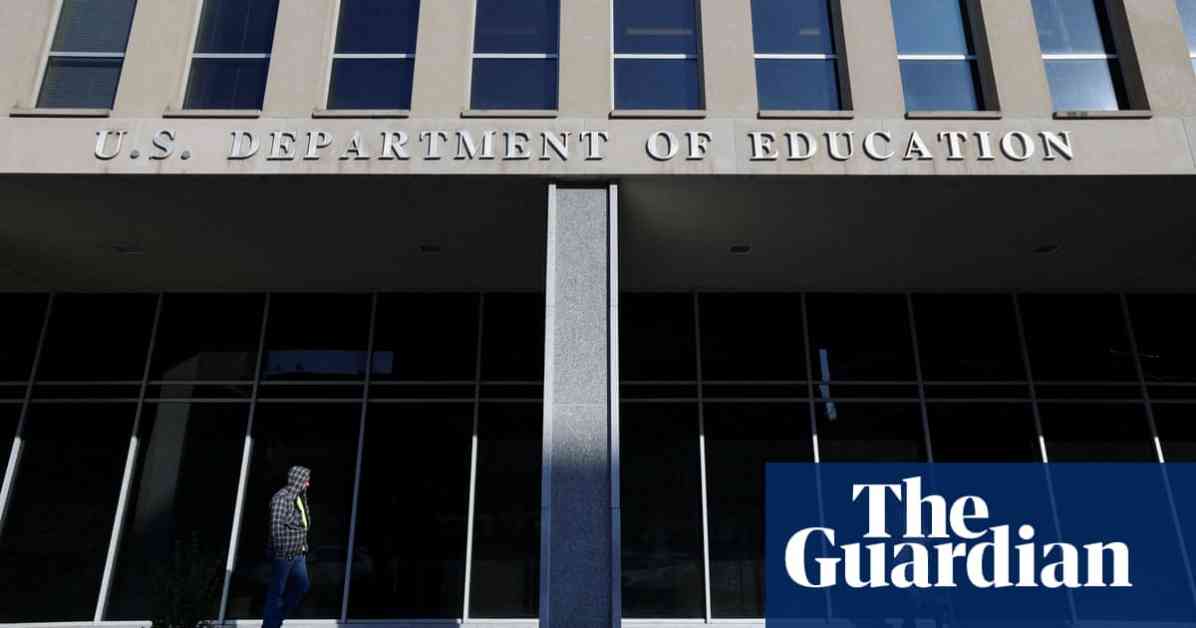The Trump administration’s recent decision to remove the online application form for popular student debt repayment plans has left many borrowers in a state of confusion and uncertainty. This move has sparked concerns among millions of Americans who are grappling with outstanding student loans, as they are now unable to access critical resources for managing their debt effectively.
The online application form for income-driven repayment plans (IDR), which help borrowers cap their monthly payments as a percentage of their earnings, has been taken down from the US Department of Education website. Additionally, the option to consolidate loans online is no longer available, further complicating the situation for individuals seeking financial relief.
This abrupt removal of essential tools for managing student debt comes after a federal appeals court decision that extended a pause on President Joe Biden’s Save program. The Save program, designed to provide loan forgiveness after a specified period of payments, has been on hold since last summer due to legal challenges brought forth by Republican state attorneys general.
As a result of the ongoing litigation, approximately 8 million borrowers who had enrolled in the Save program are now left in limbo, unsure of the fate of their loans. The uncertainty surrounding the reinstatement of payment plan applications on the Department of Education website adds to the growing anxiety and frustration among borrowers.
Impact on Borrowers and Loan Forgiveness
The continued setbacks in the journey towards student loan forgiveness have raised alarms among individuals burdened by debt and loan forgiveness activists. Critics have pointed out that the removal of payment plan options was not a direct result of the ongoing legal battles, adding a layer of complexity to an already challenging situation.
One of the major concerns stemming from the removal of online forms is the lack of clarity on how borrowers already enrolled in income-driven repayment plans should proceed with submitting their annual income certification paperwork. This lack of guidance further compounds the confusion and stress faced by borrowers navigating the complex landscape of student loan repayment.
Response from Advocacy Groups and Experts
The decision to quietly remove the online applications has drawn criticism from various quarters, including advocacy groups like the Student Borrower Protection Center (SBPC). The SBPC, a non-profit organization dedicated to addressing student debt issues in the US, issued a scathing statement in response to the administration’s actions.
“Shutting down access to all income-based repayment plans is not what the 8th Circuit ordered—this was a choice by the Trump Administration and a cruel one that will inflict massive pain on millions of working families,” the SBPC statement reads. The organization further highlights the disconnect between President Trump’s campaign promises of reducing costs and the detrimental impact of the recent policy changes on borrowers.
In the midst of these developments, the Department of Education’s handling of the situation has also come under scrutiny. Critics have raised concerns about the lack of transparency surrounding the removal of essential forms, with many advocating for clearer communication and support for borrowers navigating the complexities of student loan repayment.
As borrowers grapple with the uncertainty of their financial futures and the challenges of managing student debt in an ever-evolving landscape, the need for clarity, support, and advocacy remains paramount. The removal of online resources for repayment plans underscores the importance of accessible and transparent mechanisms for individuals seeking to alleviate the burden of student loans.





